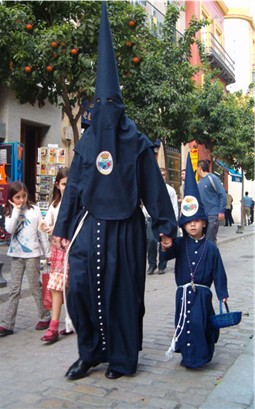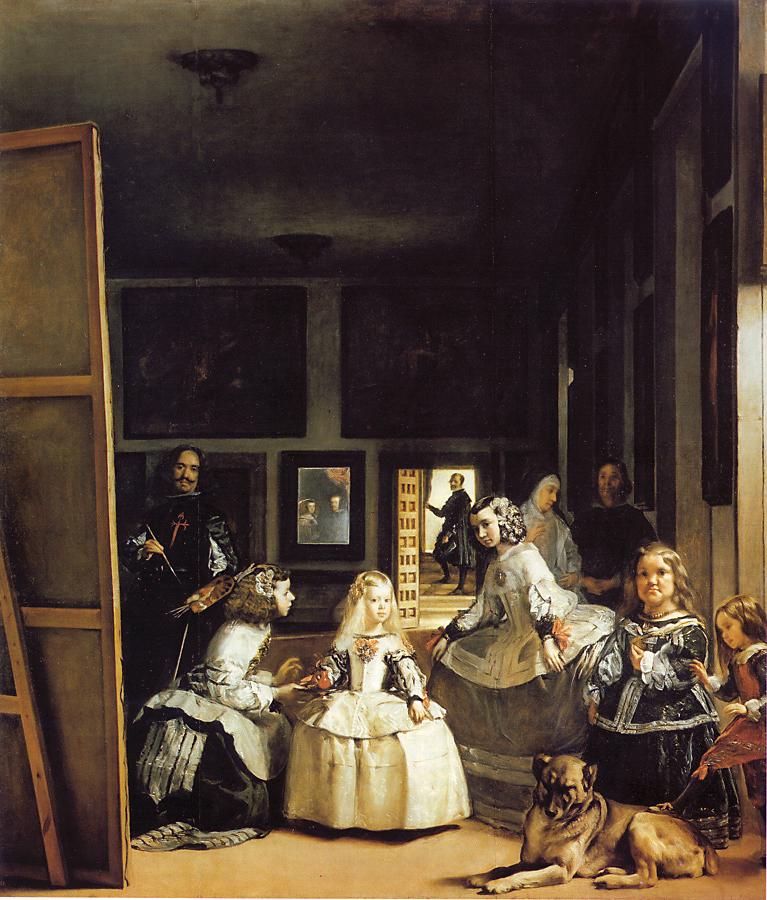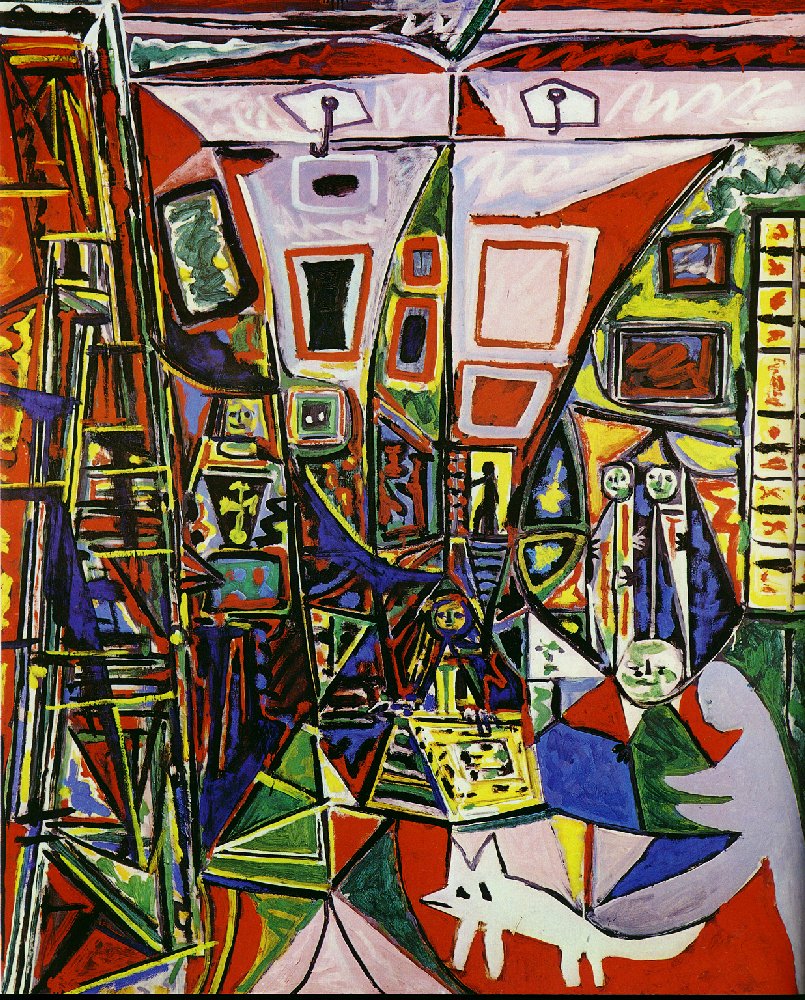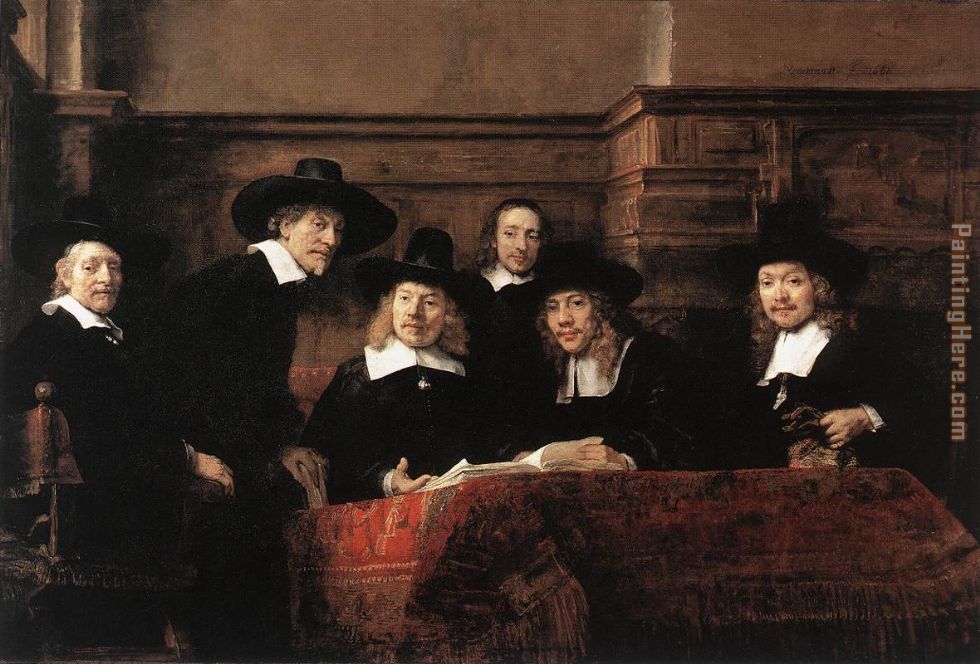 |
| Father and son wearing nazarenos. |
Last week, there was a break from university classes for Semana Santa, or Holy Week. Semana Santa is the week leading up to Easter, the celebration of the end of Lent, and it is especially important in Seville. Seville happens to have one of the largest festivals for Semana Santa, including long processions accompanied by marching bands, in which women wear dark veils and men wear
nazarenos, large pointed caps. (Actually, the Ku Klux Klan uniforms were derived from the
nazarenos.) These processions last for hours and involve different
hermandades, brotherhoods, and
cofradias, confraternities, proudly displaying their
pasos, large, wooden, iconoclastic figures that are unique to each brotherhood and church. For example, one church group sports
El Resuscitado, the resurrected Jesus, and carries said
paso from their church, through the Seville city center and back around to their church, in a lap that lasts roughly ten hours! For the first half of Semana Santa, four friends and I decided to do some traveling within Spain and, eventually, make our way to Amsterdam before returning for the
madrugá, the most scintillating processions in which many
hermandades march through the dead of night, intending on reaching the enormous Cathedral of Seville at dawn on Good Friday.
DAY ONE
 |
| Brett, Erik, Vika and I stand in the sunny center of Plaza Mayor. |
My friends Brett, Vika, Erik, and I arrived in Madrid in the early afternoon. We settled at our hostel and decided to walk around and get a feel for Madrid before our friend Ronak arrived to join us. First, we walked to the Plaza Mayor, the centuries old central square in Madrid. There, we basked in the sunlight and watched as tourists bustled back and forth and street performers, like an overweight man in a Spider-Man outfit, entertained passersby. From Plaza Mayor, we ventured to the second most famous plaza in Madrid, Puerta del Sol. Puerta del Sol is in the very heart of Madrid and is always jam-packed with tourists and locals alike. There are a number of shops and fast food joints that encircle the square, as well as a monument to King Charles II where a lot of youths like to hang out and eat. Our final stop of the evening was by the Palacio Real. The Palacio Real is recognized as the official residence of King Juan Carlos I, the current monarch of Spain, and his wife, Queen Sofía. The royal family, however, do not live at the Palacio Real, but instead use it for important events and ceremonies. The royal family lives in the Palacio de la Zarzuela, on the outskirts of Madrid, but the Palacio Real is still often utilized and was the site of the 2004 wedding banquet for Prince Felipe, Juan Carlos' son, and his wife Letizia, Princess of Asturias. In its past, however, the Palacio Real was the true home to many Spanish monarchs, the last being Alfonso XIII in the early 20th century. We relaxed at sunset in front of the immense palace, which is built in the baroque style with stone sculptures consuming its foremost facade. Next, we decided to stroll through the palace gardens, between giant hedges and beneath overhanging canopies.
 |
| The Palacio Real in Madrid. |
That night, Ronak finally arrived and the five of us went out for tapas to meet up with my hometown friend, Steve. Steve is studying in Madrid and he was leaving the next day for Barcelona, but wanted to give us the lowdown on his current city before he departed. We shared plates of fried potato croquettes, sliced peppers in oil and vinegar, cured cheese and potatoes with aioli and quenched our thirsts with a pitcher of sangria. As we ate, Steve told us all of the museums and different plazas we should explore in our ample time in Madrid. Since he is also a member of the Tulane football team, Steve promised he would take care of my sister, Jesse, who will be attending Tulane next year.
DAY TWO
We awoke late and headed to the Plaza Santa Ana to meet my friend, Chris, for lunch. The night before, we had met a kid named Mo in our hostel. He lives in Guam, just graduated and was traveling in Europe by himself before meeting up with some friends in London. The five of us immediately clicked with Mo and decided to adopt him into our merry troupe. Mo accompanied us for the next two days in our Madrid travels and was an easy and go-with-the-flow companion. Hopefully, I can visit him in Guam, where he invited us to scuba dive! Anyway, to return back to my story of our lunch with Chris, in a bizarre twist of fate, this would be the last time Chris and I would cross paths during our study abroad as he would be leaving his study program in Madrid the following day for Seville! So, he took us out for a nice lunch of tapas and gave us some useful guidance regarding our plans for a day trip to a surrounding Spanish province. His suggestion was that we go to Segovia, but more on that later. At the end of lunch, Chris took us for some delicious gelato and sprinted off towards his next class.
 |
| I try to get a little artsy at the Madrid Botanical Gardens. |
That day, we were intent on exploring one of Europe's most renowned museums, the Prado. The Prado has an astounding collection of Renaissance and baroque paintings and represents artists throughout Europe. In Spain, the Prado is especially worshiped for its vast collection of works by Spanish painters like Diego Velázquez, José de Ribera and Francisco Goya. Yet, as we arrived at the Prado, we decided to delay the visit an hour so we could enjoy the adjacent Botanical Gardens. The five of us strolled through the sunlit rows of roses and rhododendrons, soaking in the scenery and the fresh air. Our experience of natural beauty segued perfectly into artistic beauty as we entered the Prado.
 |
| The exterior of the Prado. |
 |
| Velázquez's "Las Meninas." |
Though I had been to the Prado as a senior in high school, I definitely appreciated the artwork more the second time around, thanks in large part to my studies in my History of Modern Art in Andalucía class. Among the most recognizable works in the Prado are Velázquez's "Las Meninas," Goya's "La maja desnuda" and "The Third of May 1808," and Raphael's "Portrait of a Cardinal," to name a few. I found myself most enraptured by the works of Goya, his unique style and use of dark and light contrasts makes for an awesome cinematic element to his works. I, of course, loved "The Third of May," which depicts the execution of Spanish rebels by Napoleon's army, but I also like "Saturn Devouring His Son," a grotesque painting from Goya's so-called "black" period that depicts a popular story from Greek mythology. In said story, the titan, Saturn, eats his own child so as to avoid a prophesy that cautions of his inevitable dethroning and incarceration by one of his children. Of the many Velázquez works, "Las Meninas" is celebrated for its artistic merit as well as its ingenuity. The picture shows a young Infanta Margarita, the daughter of King Philip IV of Spain, with "meninas," or maids of honor, primping and fawning over her. To the left corner of the portrait, a man shrouded in darkness paints a portrait that is invisible to the viewer. The true illusion of the painting is that the painter is Velázquez himself, as he paints a portrait of the Royal Couple--no, not William and Kate--Philip and Mariana of Austria. A viewer with a keen eye can only discover this interesting detail due to a tiny mirror in the backdrop of the painting, which displays Philip and Mariana posing regally. Thus, Velázquez's crowning achievement is actually a painting of one of his paintings, and I cherished being able to see the transcendent piece once again after seeing Picasso's numerous reinterpretations of "Las Meninas" in Barcelona. (Picasso painted 58 such paintings in total!)
 |
| One of Picasso's 58 recreations of "Las Meninas" that I saw in Barcelona. |
That night, we cooked ourselves dinner at the hostel, preparing rice and beans with peppers and my friend Erik's green chili chicken dish. Then, we went out for drinks by Puerta del Sol so we could catch the Real Madrid vs. F.C. Barcelona match, which ended in a 1-1 tie. Though I never really liked soccer before my study abroad, the feeling of watching such a monumental match between two Spanish juggernauts
in Madrid was absolutely electric.
DAY THREE
 |
| Outside the Reina Sofía. |
After our day at the Prado, we decided to round out the Madrid museum scene with a trip to the Reina Sofía. Named after the current queen of Spain, the Reina Sofía is a collection of more modernist pieces. Located just five minutes from the Prado, the Reina Sofía provides viewers with a starkly different collection that is equally wowing and more conceptual. The claim to fame for the Reina Sofía is Pablo Picasso's "Guernica." Many Picasso pieces are housed at the Reina Sofía, but "Guernica" is the most substantial due to its large size and dark theme. The painting is entirely black, white and grey with characters fashioned in Picasso's characteristic style. In other words, the figures are distorted and grotesque, with strange shape and form. The piece represents pure chaos, disaster, sorrow and fear as animals (like a bull and a horse) and people alike are shown screaming and injured. Picasso's most famous work was an anti-war response to the bombing of the Spanish city of Guernica during the Spanish Civil War in 1937.
 |
| My view of Picasso's "Guernica." |
 |
| Jacoby's "Dark Room." |
Since we had the entire day free, we decided to take advantage of our viewing privileges at the Reina Sofía. We spent about three hours, loitering in every single room on each of the four floors of the massive museum so as to analyze and observe all that we could. There was an interesting temporary exhibit of artwork from Roberto Jacoby, an Argentinian artist, including a queerly decorated room meant to resemble a living room and a collection of infrared videos from the "Dark Room," in which Jacoby put volunteers in strange uniforms and allowed them to roam around in the pitch dark. My favorite paintings, besides from the Picasso masterpieces, were the bizarre, surrealist works of Salvador Dalí and his contemporaries. Dalí's art was truly dark and twisted and, as a human being, he was immoral and conceited, but there is no denying the innovation and ability in his work. For example, in "The Invisible Man," he toys with the viewer by using a distopian, deserted background stand in for the body parts of a seemingly invisible man. After the Reina Sofía, the rest of the day was spent walking the streets of Madrid, planning for the next day's activities and buying more supplies to cook our final dinner with Mo.
 |
| Dalí's "The Invisible Man." |
DAY FOUR
 |
| Erik and I stand in front of one section of the Roman aqueduct in Segovia. |
The five of us got on a train, excited to broaden our Spanish horizons. We were off to Segovia, a province north of Madrid. The three main attractions of this beautiful, mountainous region are an enormous, Gothic cathedral (does that sound familiar?), a Roman aqueduct and a royal Palace. The train from Madrid to Segovia was 30 minutes, and then we took a bus for 10 minutes into the city center. We were dropped off face to face with the Roman aqueduct, perfectly preserved since the Romans occupied the region centuries ago. Since the aqueduct lacks any inscription, no one is sure of its original construction date, but researchers estimate it was built between the 1st and 2nd centuries. The aqueduct has two bodies, each built by large, rectangular, granite bricks and it forms many swooping arches. At the very top, there is a long channel which funnels water into the city. The aqueduct is a focal point of the city and is an unbelievable testament to Roman engineering and intellect. From there, we went and had a nice brunch in the city center and then made our way towards the Plaza Mayor.
 |
| Vika and I in front of the Cathedral of Segovia. |
The Plaza Mayor is a central square in Segovia surrounded by different neighborhoods, including the former Jewish quarter. The main attraction in the Plaza Mayor is the Segovia Cathedral, a large, Gothic cathedral from the 16th century. In many ways, the Segovia Cathedral mirrors the Catedral in Seville: they both have a sandy, tannish facade with a tall, looming tower and intricate Gothic spires for design. Yet, inside, the Segovia Cathedral has an awing collection of religious art and gilded altars. There is also access to a velvet covered room with sprawling tapestries where the clergy convene. Unfortunately, however, churchgoers cannot climb the tower for a view of Segovia.
 |
| The clergy meeting room is covered in beautiful tapestries. |
Our final stop was equally impressive, as we made our way towards the Alcázar of Segovia. Fanatical Segovians swear that this eccentric royal palace is the inspiration for Walt Disney's iconic Cinderella Castle, but this fact has never been verified by a viable source. In any manner, the Alcázar rests precariously on the edge of a mountain, etched into the natural scenery deftly by its Arab builders. Furthermore, the palace is notable for its shape, as it was built to resemble the bow of a ship. Thus, rather than have a rigid, square body, it is more curvaceous and has large towers that look like giant rooks from a chess board. Inside, there is an exhibit of old armor and weaponry, since the palace was originally intended to be a military fortress.
 |
| I stand in front of the Alcázar of Segovia. |
Finally, we left the Alcázar and stopped for an early dinner before returning to Madrid. Segovia is known throughout Spain for its cochinillo, roasted suckling pig, and, though we did devour some delectable pork dishes, we decided to refrain from consuming the entire body of a pig among the five of us.
DAY FIVE
 |
| A view from the Parque del Buen Retiro. |
We relaxed and tanned in the sun at the gorgeous Parque del Buen Retiro for an hour or two before mobilizing and going to the Barajas International Airport, destined for Amsterdam. Upon arrival in Amsterdam, we checked into our youth hostel (which doubles as an Irish pub). My friend Brett had returned to Seville, having traveled to Amsterdam prior, but we swapped in our other friend, Jake, who met us at the Amsterdam Centraal train station so we could grab dinner. One thing about Amsterdam is that it really does not have much of an alimentary identity. Instead, there are a variety of options that form a sort of melting pot similar to American cuisine. So, we decided to munch on some Thai food because we had all been craving Asian noodles.
 |
| A street in Amsterdam. |
That night, we walked around exploring the moonlit canals in the dark. Amsterdam is a lively city during the day, with Dutch men and women on bikes zipping past and everyone out and about, but at night the city is relatively serene and picturesque (asides from the notorious Red Light District). In fact, within several hours I developed a fondness for the "Venice of the North" and I was excited for the next day's activities.
DAY SIX
 |
| The Rijksmuseum. |
Having spent much of our last day napping, eating and traveling, we decided to try for a more eventful 24 hours in Amsterdam. First, we met up with my friend from Scarsdale, David. David is currently studying in Rome and had been visiting his cousins in Germany when he decided, on a whim, to see Amsterdam. As we had done before with Mo, we decided to initiate David and allow him to become part of our clan. So, with David in tow, we went to the Rijksmuseum to see Amsterdam's best collection of Dutch artistry. Inside is a vast collection of paintings by Dutch artists Rembrandt, Johannes Vermeer, Jan Steen and Frans Hals. Out of the foursome, each had his own work that really tickled my fancy. Regarding Rembrandt and Vermeer, there were some extremely famous works on display at the Rijksmuseum including Vermeer's "The Milkmaid," a portrait of a robust servant girl pouring milk, and Rembrandt's "The Sampling Officials," a collective portrait of Draper's Guild paupers. "The Sampling Officials" captures the essence of six men in one fell swoop; each man wears the same black robes with white collars and each looks intently into the eyes of the viewer. Yet, the placement of each figure gives the painting some depth and volume and each man has a distinct look and appearance, despite the uniformity of the outfits. I also took particular note of Vermeer's "The Little Street," which depicts a quaint street in Amsterdam in a seemingly simplistic manner.
 |
| Rembrandt's "The Sampling Officials." |
 |
| Anne Frank House. |
Our group followed up the Rijksmuseum with some more aimless wandering through Amsterdam. We were really intent on exploring the city on foot, as Amsterdam is a city jointly governed by the pedestrian and the cyclist. Finally, we stopped by the river next to a long queue of people on a small street. My friend Erik and I had purchased tickets online to go see the Anne Frank House, while the others in our group did not have the foresight or the motivation. So, we jumped the line at 5:30 (our designated time to enter the museum) and bid our friends goodbye, vowing to meet up with them back at our hostel before dinner. The Anne Frank House is an exhibit set in the actual house where Anne Frank and her family hid from the Nazis during WWII. Simply being in the very house where the sweet little girl hid and persevered through her keeping of a personal diary is chilling and stunning. Museum-goers are able to weave their way behind the secret bookshelf and up the stairs to explore the very rooms where Anne, her sister Margot, her father Otto, her mother Edith, the van Pels family (Hermann, Auguste and Peter) and Fritz Pfeffer all lived for more than two years. The true accomplishment of the Anne Frank House, besides its informative capabilities, is its adroit embodiment of all of those involved in Anne's wartime life. There are rooms, placards and collections of artifacts that honor all of the Jews who hid in the secret annex of Otto's office as well as the non-Jews who assisted Anne, her family, the van Pels and Fritz Pfeffer. At the end of the exhibit, you see interviews and quotes from Otto Frank as to his decision to publish his daughter's diary and spread her message of peace and hope. Thus, the museum comes full circle, documenting the start of Anne's life, to the tragic events that characterized her life, to her posthumous legacy. I was extremely moved by the exhibit, especially having seen the Jewish deportation camp outside of Prague some two weeks earlier with my mother.
When Erik and I finished at the Anne Frank House, we headed back towards our hostel. That night, we munched on hamburgers while watching Manchester United take on their bitter rivals, Chelsea, in the pub for the Champions League quarterfinal before heading up to bed.
DAY SEVEN
 |
| Van Gogh's "The Potato Eaters." |
Our final full day of vacationing in Amsterdam was also a huge success. We started off the day on a high point, heading to Sara's for some of Amsterdam's best pancakes and waffles. After a hearty breakfast to satisfy our collective sweet tooth, we meandered the streets of Amsterdam some more before our first stop of the day. We decided to go to our last museum of our week-long trip: the Van Gogh Museum. Not only is there an extensive collection of Van Gogh at the Van Gogh Museum, but the real appeal of the museum is that it chronicles Van Gogh through his influences, his contemporaries and his followers. For example, also on display are works by Camille Pisarro, who had a profound influence on Van Gogh's style. When we arrived, we were delighted to discover a Picasso in Paris temporary exhibition. Out of the portraits we saw there, Picasso's "Self Portrait" was the most recognizable and interesting. Yet, the true spotlight never strayed from Van Gogh himself. Inside, we saw priceless works like the Dutchman's "Sunflowers," "The Bedroom," "The Yellow House," and several "Self-Portraits." Out of all of the masterpieces, my favorite was "The Potato Eaters," a depiction of a peasant family huddled around a table. Van Gogh plays with darkness and dimensions in this painting and shows the dreariness and plainness of lower class life.
 |
| Vika, Jake, Erik and I camp out on the IAMsterdam sign. |
We exited the Van Gogh Museum in the late afternoon and found ourselves in a large open area between the Van Gogh and the Rijksmuseum. There, we saw the famous IAMsterdam sign and decided to snag some photos. Finally, we made the long walk back to our hostel before a relaxing dinner in our very last night in Amsterdam.






















No comments:
Post a Comment